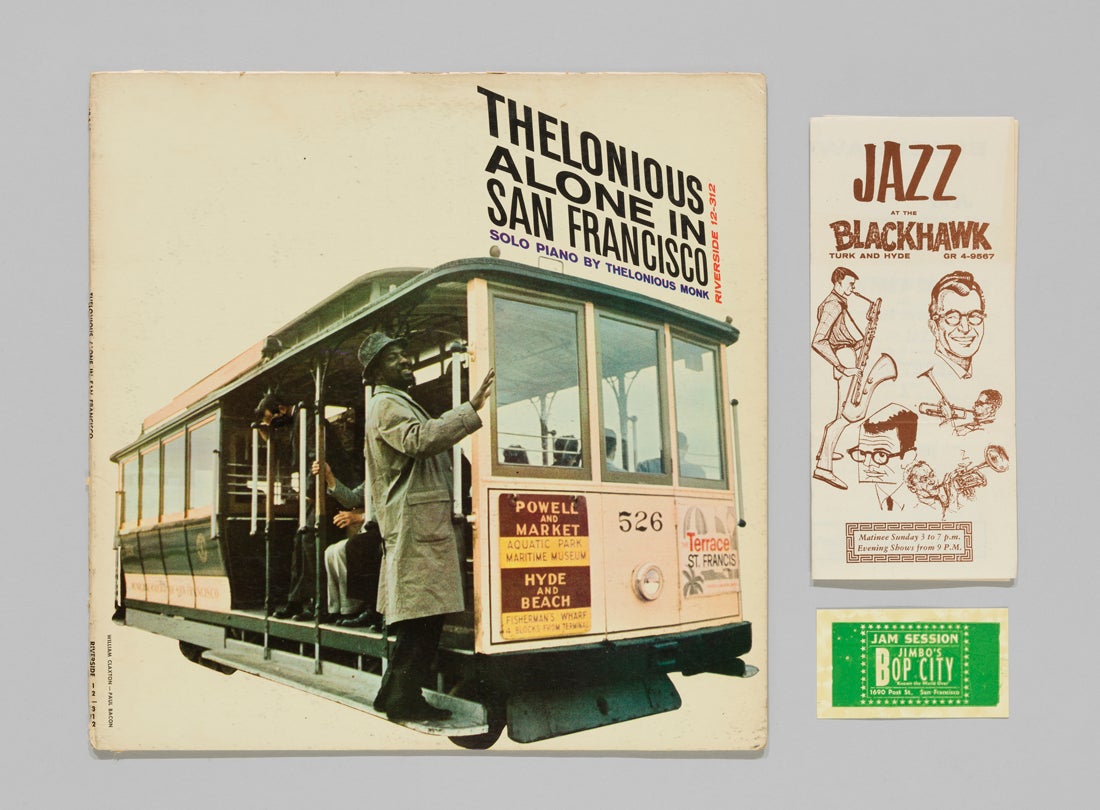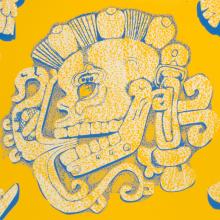Terminal 2






Greetings from San Francisco and
Golden Gate Bridge postcards c. 1940s–50s
Courtesy of Cavallini & Co. Archives
L2024.0501.032, .095
Don’t Call it Frisco 1953
Herb Caen (1916–97)
Courtesy of Western Neighborhoods Project
L2024.0522.001
This is San Francisco 1962
Miroslav Šašek (1916–80)
Courtesy of Mickey McGowan
L2024.0510.016
The Story of the Golden Gate Bridge 1936
Courtesy of Cavallini & Co. Archives
L2024.0501.038
Non-Tourist San Francisco 1958
Courtesy of Mickey McGowan
L2024.0510.015
"What is San Francisco?
To anyone trying to put a typewriter finger on its complexities and perplexities, that’s a question with a hundred answers—no one of them completely satisfying.
The truth lies somewhere between the old and the new, the progressive and the backward, the fog and the sunshine. Even those who have searched longest for it are confused afresh each day, for in any part of the city, a totally unexpected and unexplored San Francisco can be discovered—just around the next corner in the very next moment.”
—Herb Caen, The San Francisco Book, 1948
Fong Fong Bakery–Ice Cream tin and teapot c. 1940s–50s
Collection of the Chinese Historical Society of America
FIC-B-000221a-G3 #3, 222a-b G3 #3; L2024.0517.001, .002
Eight Immortal Flavors 1963
Johnny Kan and Charles Leong
Howell-North Books, Berkeley
anonymous lender
L2024.0507.002
Johnny Kan’s Cantonese Cuisine
Johnny Kan (1906–72) managed Fong Fong Bakery–Ice Cream in the 1930s in San Francisco’s Chinatown where he introduced novel ice cream flavors, such as lychee and ginger. In 1953, he opened Kan’s on Grant Avenue where he refused to cater to mainstream tastes and serve Westernized dishes, such as chop suey. Instead, Kan introduced sophisticated Cantonese cuisine to patrons. In 1959, Johnny Kan commissioned a series of twelve paintings by Chinese American artist Jake Lee (1911–91) for his restaurant Kan’s. Lee also illustrated the cover for his cookbook Eight Immortal Flavors.
“Thelonious Alone in San Francisco” 1959
Thelonious Monk | Riverside Records
Courtesy of SloLow Vinyl Records
L2024.0507.003
Jazz at the Blackhawk brochure c. 1950s
Courtesy of Mickey McGown
L2024.0510.024
Jimbo’s Bop City card c. 1950s
Courtesy of Mickey McGowan
L2024.0510.028
San Francisco Jazz
Jazz pianist Thelonious Monk recorded “Thelonious Alone in San Francisco” at Fugazi Hall in North Beach without an audience present. The Blackhawk, which operated from 1949–63, was located in the Tenderloin and featured live jazz performances by renowned musicians, such as John Coltrane and Dizzy Gillespie. Bop City, one of the most famous Fillmore clubs on Post Street, opened in 1950 as Jimbo’s Waffle Shop. When local musicians discovered an unused backroom and began holding after-hours jam sessions, it quickly became a magnet for famous jazz musicians visiting San Francisco.
Mona’s 440 Club ashtray c. 1940s
GLBT Historical Society
2022-136; L2024.0516.001
Doorman’s cap from Finocchio’s mid-20th century
Finocchio’s Collection, GLBT Historical Society
1999-79; L2024.0516.002
Gay Pride June 25, 1972
General Subjects Ephemera Collection
GLBT Historical Society
SUP EPH; L2024.0516.003
Gay Freedom Day and Gay Parade pins 1972–79
Art and Artifacts Collection, GLBT Historical Society
GLBT-ART; L2024.0516.007, .008
LGBTQ
During the post-Prohibition 1930s, a visibly gay nightlife culture flourished in San Francisco. At the time, the most prominent LGBTQ area was North Beach. Mona’s, owned by Mona Sargent, opened in 1934 and operated at 440 Broadway, where it featured drag kings. Nightclubs in the area, such as Finocchio’s, which opened in 1936, attracted gay, straight, and celebrity audiences to their drag shows. Several decades later, in 1972, San Francisco held its first large-scale Pride parade downtown, with more than two thousand participants and thousands of spectators. Gilbert Baker (1951–2017) debuted his rainbow flag design at the 1978 Gay and Lesbian Freedom Day Parade.
Indians of All Tribes newsletter 1970
Vol.1, No. 2
GOGA 35283; L2024.0514.004
Indians of All Tribes baseball c. 1969
GOGA 91973; L2024.0514.007
Spare-Changer ledger 1969–70
GOGA 35283; L2024.0514.006
Resident ID for Joseph Morris 1969
GOGA 35283; L2024.0514.008
All objects are from the collection of the National Park Service, Golden Gate National Recreation Area.
1969 Occupation of Alcatraz
On November 20, 1969, Richard Oakes (1942–72) and a group of Indigenous activists and students claimed Alcatraz Island in the name of all American Indians. The group adopted the name “Indians of All Tribes” as many different nations were represented among the occupiers. Occupiers intended to develop a Native American studies center, a spiritual center, training school, and museum. On June 10, 1971, federal marshals swarmed Alcatraz and the occupation ended. Nevertheless, Alcatraz remains the longest prolonged occupation of a federal facility by Native Americans. It awakened the public to the injustices endured by Indigenous Americans, prompting new federal policies and nationwide political action.
Gran Baile del Cinco de Mayo poster 1978
L. Lucero
Courtesy of the Mission Cultural Center for Latino Arts Archival Poster Collection
LR 145
L2024.0505.001
El Tecolote newspaper December 1970
San Francisco
Courtesy of Acción Latina
L2024.0504.001
Mission District
The largest share of Latinx people in San Francisco called the Mission District home by the 1960s, and ’70s, and the neighborhood experienced a cultural renaissance. El Tecolote, first published in 1970 by San Francisco State University La Raza Studies Professor Juan Gonzales, serves the area’s Latinx community and remains the longest running bilingual (English/Spanish) newspaper in California. Two of the city’s most influential poster printing workshops also emerged from the Mission: La Raza Silkscreen Center and Mission Gráfica, which still operates today as part of the Mission Cultural Center for Latino Arts.





